By Sophie Fletcher, Perinatal Hypnotherapist, and author of Mindful Hypnobirthing and Mindful Mamma: The First Year.
Instagram: @sophiefletcher_author
Hypnobirthing when you are higher risk
Why does it matter if I’m higher risk?

Over the years I have taught many women that are higher risk and under the care of obstetricians. In the UK by default this would mean more monitoring, during pregnancy, and birth. Rather than giving birth in a midwifery-led space, which is often dimmed, with a pool, ball and so on (you know those lovely spa-style birth rooms on Instagram?), the obstetric rooms are often more like how you would expect a hospital room to be. In the US and in some other countries across the world, this is often the standard approach even if you were low risk. Risk may mean an induction, more monitoring and, evidence shows, a higher rate of intervention. This shouldn’t always be the case, and I want to invite you to explore the possibility that higher risk does not automatically mean higher intervention.
Isn’t hypnobirthing for just low-risk pregnancies?
As a perinatal hypnotherapist I prepare women for birth by working with thoughts and feelings, to enable them to work with their body, and have the best possible birth. I use a mix of mindfulness and hypnosis to explore belief and fear, and I teach practical tools to them and their partner. Hypnobirthing is about finding your voice and being confident to use your voice, not only to explore your choices but also to advocate for yourself if you feel you aren’t being listened to. This is especially important for black and brown women who are statistically more at risk.
Many people birthing, both low and high risk, are afraid, and I see fear in nearly all these women. The reasons may seem obvious, but it’s often more complex when there is risk. Women who are higher risk, immediately sense that their choices, and control, may be curtailed. Some women may be fearful of hospitals and not want to birth there, some may be frightened of needles, some may be anxious about induction, or being monitored or of intervention. Some may recognise that by being higher risk, they may have to fight harder for the type of birth they want. I even work with those who have health conditions or complications that in some hospitals deny them a pool birth or midwife in a room that is tranquil and calm. It shouldn’t but it does.
Focus on how to prepare for a positive experience
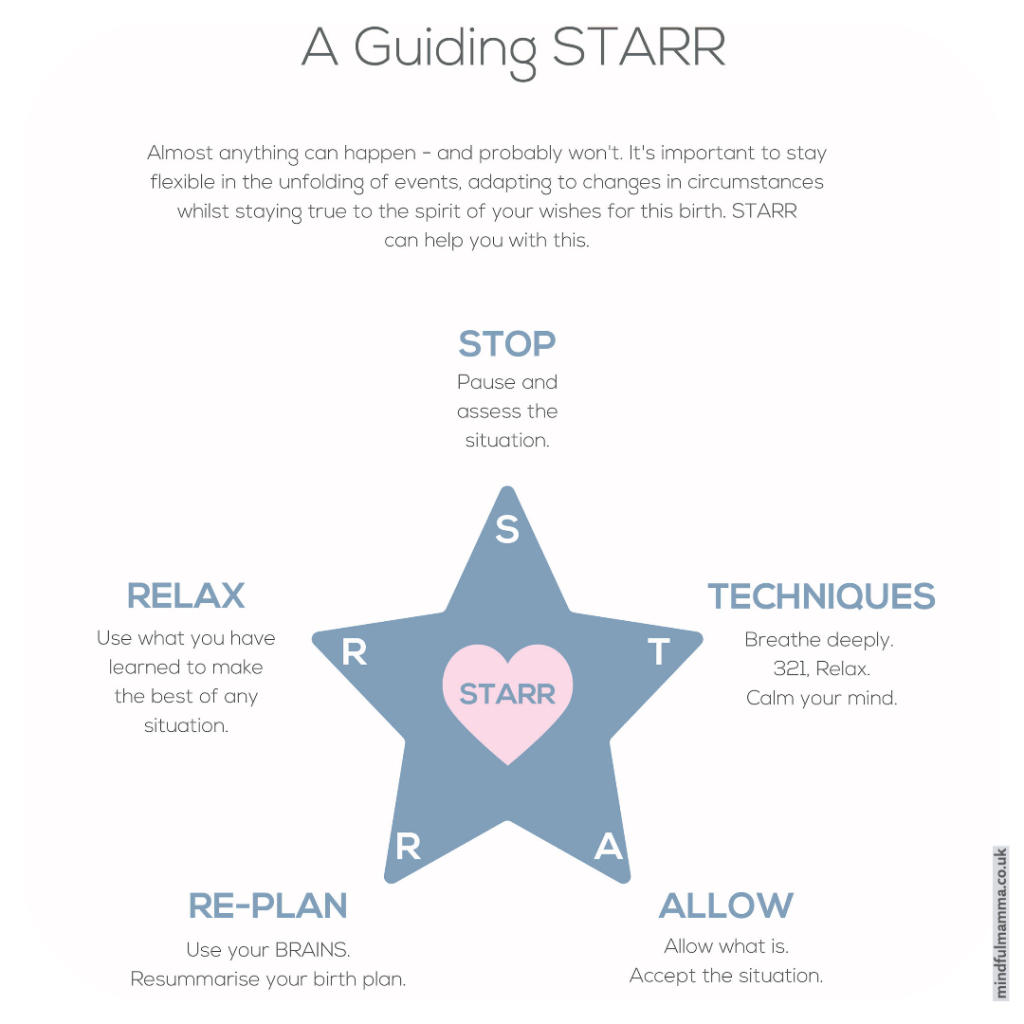
People assume that hypnobirthing is about low risk, normal birth and it is mostly – because a very high percentage of births should be low risk. However, as we see an escalation of perceived risk in birthing, hypnobirthing becomes more important. Yes, hypnobirthing when you are higher risk is absolutely superb for optimising your chances of normal birth, especially if you are low risk, but if you are hypnobirthing when you are higher risk it is an important way to helping you navigate a sometimes complex and unexpected journey. My way of teaching isn’t about your perfect birth, instead I want you to be prepared to have a positive experience.
My work focuses on values, resilience, belief, support and self-efficacy. Understanding the role of the fight or flight system in decision making is imperative and recognising when it’s fired up is crucial in helping you to regroup and take time to consider what is right for you, with the full facts.
Twice, I have worked with women who had experienced epileptic seizures in the past. Instead of talking about the type of seizures – how long ago the last one was, what their individual experience was – both were immediately put under consultant led care. In fact, stress can trigger a seizure, so optimising the birth environment is crucial. With hypnobirthing support they both took an active role in ensuring they had a positive birth.
One woman had an induction, and a very positive experience with a good birth plan, a doula, a wonderfully compassionate midwife who rearranged the room, and a doctor who stepped back and instead sat and talked , asking lots of questions about hypnobirthing.
Birth Story
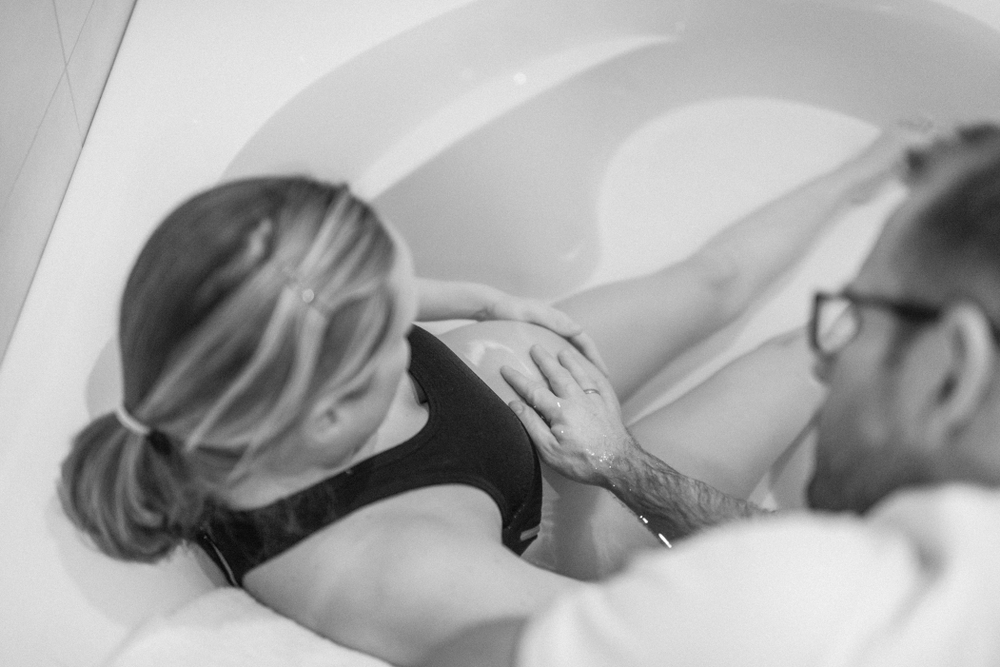
The second is called Sophie and describes her experience here:
As a previous epilepsy sufferer, my healthcare team wanted me to be consultant led, monitored throughout labour and to use offered pain relief.
I fought, and I would use that term, with my consultant to have the option of a water birth. This was declined and I had a meeting with the midwife consultant via a birth options meeting and looking at my risk factors (which were low) she agreed to a water birth with little to no monitoring and to allow a hypnobirthing approach – something which my consultant at an earlier meeting had told me would be unlikely to work.
Come the 1st of May I was due to be induced, my midwife had thought I had been in early labour for a week or so due to stopping and starting. During these times, mostly at night, I used your techniques completely to aid me through the pains.
I was at home on the day awaiting the call from the hospital with my time to arrive. I went on a walk with my family along with a lot of pressure, ate some good food and tried to take my mind off the impending induction which I had read so much negativity about. At 12:45 I began experiencing some intense sensations, which were coming like waves. I followed the advice you gave in mindful hypnobirthing and moved to my hands and knees to cope with the building intensity and as they progressed, swaying my hips too.
I rang the midwife an hour after the first contraction had started and they told me to make my way in. This was all happening during the lockdown and so partners were not allowed into the hospital until established labour had started. I waddled alone from the car to the maternity unit with determination summoned from somewhere now unknown and after what felt like an eternity of waiting for a midwife to appear, I was examined to find I was fully dilated and could push if I wanted to. Husband was called, the pool started to fill – although midwife did warn me it probably wouldn’t be ready in time.
I moved onto all fours and twenty minutes after first arriving at the hospital, Mary was born. It was the calmest birth I have had; I was fully aware of what was going on around me, used the breathing techniques and visualizations you taught in the book and unlike my previous labours, really did come away with the superwoman feeling.
I’m still very emotional (hormonal) about it hence why this may seem like a never-ending rambling, but I really am thankful to you and your book. It made me understand my body in a completely different light and despite previous understanding, actually how much control we really do have over our pregnancy and birth.
What do you do if you are higher risk?

First take a step back. Are you able to answer these questions?
- have you asked if there are alternatives to be being induced/monitored
- did you want to go in the pool and been told “no”
- are you giving birth in a consultant led unit when you wanted to give birth in a midwife led unit?
- did you want to do hypnobirthing and think there is no point?
- are you thinking “all my birth plans have gone out of the window”
- do you feel out of control, scared or overwhelmed?
- have you thought of a doula?
Your birth plan still matters, your values for your birth still matter.
I understand it can be hard, when things veer from normal sometimes it’s hard to know what you can do, and what you can’t. What is safe and what is not.
This is why there are brilliant senior midwives that can talk this through with you. You can ask to make an appointment and discuss your preferences, what you would like and why it’s important to you. How can they help you to make your birth as close to your values as possible, and as positive experience as possible? You will only know if you ask!
How can hypnobirthing help me do this?
Hypnobirthing when you are higher risk can help you with this by preparing you to feel strong, clearheaded, focused and very aware of what will help optimise your baby’s birth. Especially the importance of the unconscious associations you make with your environment. You may even find that the midwife teaches hypnobirthing herself, and completely understands what you want!
In the book Mindful Hypnobirthing, I talk about BRAINS as a method of asking questions, and there is also a great technique called Guiding STARR which helps you to activate your soothing system before making an important choice. Why does this matter? When anxious and stressed we activate fight or flight, this is not a time for making decisions! If you ever get brain fog when giving a presentation, you know what I mean.
What next?
Never think “that’s it”, There are nearly always options. First learn about choice. There are some very helpful factsheets at Birthrights.org.uk click here to access them. You can also use the advice lines at AIMS, they have a great range of factsheets as well on their site.
Read my book Mindful Hypnobirthing, Milli Hill’s The Positive Birth Book, spend some time focusing on what you would like for your baby’s birth, then make an appointment to discuss your preferences.
You can also do a class with a trained Mindful Hypnobirthing teacher. Find one near you. Many teachers do them both face to face and online. So whenever you are in the world you can do one! You could also start listening to a free mp3 to have a go. You can download the one from the book here.


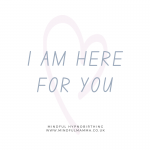



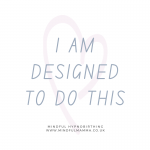

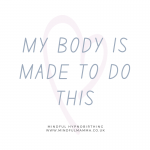
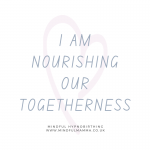
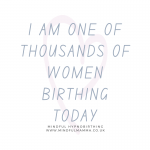
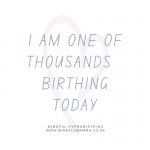


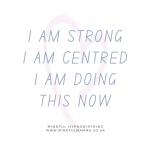
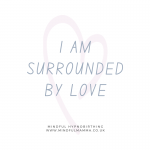
Leave a Reply